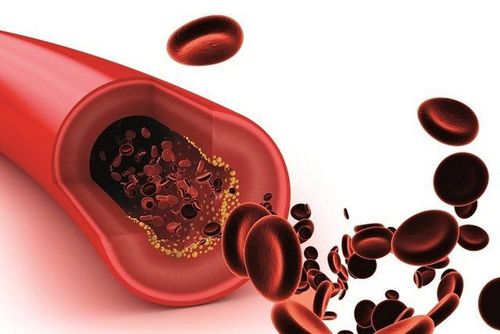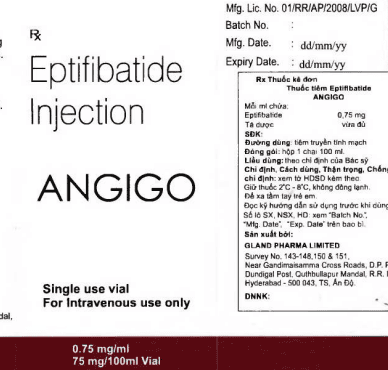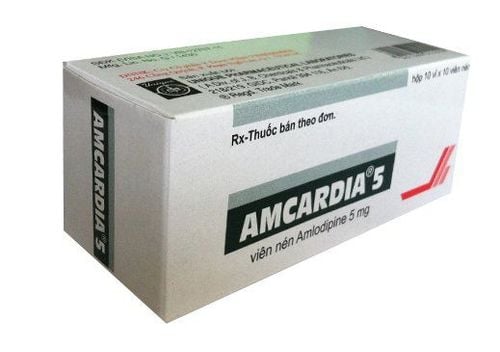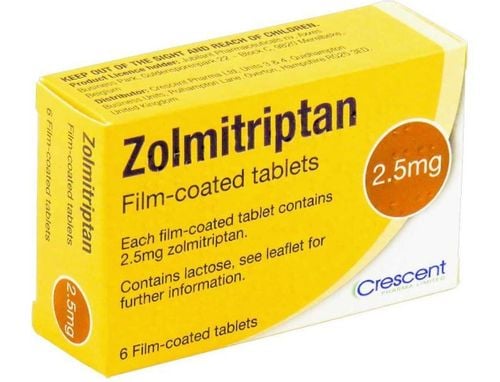This is an automatically translated article.
The article was written by Cardiologist - Department of Examination & Internal Medicine - Vinmec Phu Quoc International General HospitalThe medical definition of myocardial ischemia is the term for the heart muscle that is deprived of blood supply due to the narrowing of blood vessels that supply the heart by plaque. Usually, myocardial ischemia will cause angina, the heart muscle is not nourished enough will cause symptoms of chest pain or heaviness.
1. What is silent myocardial ischemia?
Angina is considered the primary symptom of myocardial ischemia and coronary artery disease (the arteries that feed the heart), studies have established that silent myocardial ischemia (defined as myocardial ischemia with objective evidence without chest pain) is commonly seen in patients with coronary artery disease.Several reports in the 1980s and 1990s recorded that between 25 and 45% of patients with coronary artery disease had myocardial ischemia, and most (> 75%) of these ischemic episodes did not. associated with chest pain.
2. When is silent myocardial ischemia likely to occur?
Silent myocardial ischemia has been widely reported in patients with no history of coronary artery disease and in patients with coronary artery disease such as: previous myocardial infarction, unstable angina, and stable angina.

Mạch máu nuôi tim bị hẹp bởi mảng xơ vữa là nguyên nhân dẫn tới thiếu máu cơ tim
Myocardial ischemia occurs when there is an imbalance between myocardial oxygen supply and demand. During exertion, the heart has to pump more blood to feed the body. The heart itself also needs more oxygen. But because the arteries that feed the heart are narrowed, they can't pump enough blood to feed the heart, so the heart muscle is ischemic and causes chest pain.
Patients with diabetes or a history of angina are more likely to have silent myocardial ischemia.
3. Why is there ischemia without causing chest pain?
Possible explanations include:Pain threshold has not been reached during an episode of myocardial ischemia. Severity and duration of pain are less than previous ischemic episodes. The patient's pain threshold is higher than the pain. Impaired perception of painful stimuli. The angina warning system is faulty. High levels of beta-endorphin: inhibitor of pain signaling.
4. How is silent myocardial ischemia diagnosed?
The only way to diagnose silent myocardial ischemia is to do diagnostic tests such as stress testing or electrocardiogram holter monitoring :There is variation in the ECG when doing the wheelchair or bicycle test compared to when Vacation. Myocardial perfusion scintigraphy : helps to see if the blood supply to the myocardium is sufficient or not Stress echocardiography (carpeting or medication): is a non-bleeding probe used to investigate the movement of the heart wall during at rest and during exertion. The Holter ECG is a portable, portable ECG recorder. It has the advantage of providing 24-48 hour ECG recordings of ischemic and arrhythmic events while the patient is engaged in routine out-of-hospital activities.

Siêu âm tim gắng sức chẩn đoán thiếu máu cơ tim thầm lặng tại Vinmec
Please dial HOTLINE for more information or register for an appointment HERE. Download MyVinmec app to make appointments faster and to manage your bookings easily.
5. Who is at high risk for silent ischemic heart disease?
People at risk for heart disease and angina are also at increased risk for silent ischemic heart disease. Risk factors include:Smoking, diabetes, dyslipidemia, hypertension, family history of early heart disease (men < 55 years, women < 65 years) Age (> 45 years for men and women) > 55 years old for women) Sedentary lifestyle Obesity Stress
6. How can I reduce my risk of silent ischemia?
To reduce your risk of silent ischemic heart disease, you should reduce your overall risk of heart disease. Here are some things you can do:Stop smoking Control your blood pressure and blood sugar, blood fats. Exercise regularly: 15-30 minutes/day, 3-5 days/week If you are overweight, lose weight; maintain BMI =18.5-23 kg/m2 (Asian people) Eat a heart-healthy diet: lots of fruits and vegetables, and limit salty, sweet, and fatty foods. Take steps to reduce stress in your life and learn to manage stress. See your doctor regularly and follow your doctor's instructions.

Nên gặp bác sĩ thường xuyên để kiểm tra và phòng ngừa nguy cơ thiếu máu cơ tim kịp thời
7. What are the common treatments for silent ischemia?
If you have been diagnosed with silent ischemia, your treatment plan will be based on several factors such as your age and overall health, lifestyle, and risk factors. Treatment options may include:
Lifestyle changes to reduce the risk of a heart attack. Medical: Antiplatelet like Aspirin, statin, control blood pressure - blood sugar Surgery: + Angioplasty with balloon.
+ Coronary artery bypass surgery.
+ Percutaneous coronary intervention.
8. What specialist can help you treat silent ischemia?
Silent myocardial ischemia can be treated by internists; however, most doctors will refer their patients to a cardiologist, cardiac surgeon, or thoracic surgeon to diagnose and treat silent myocardial ischemia. Other specialists may also be part of a multidisciplinary team of specialists to treat your heart condition.













